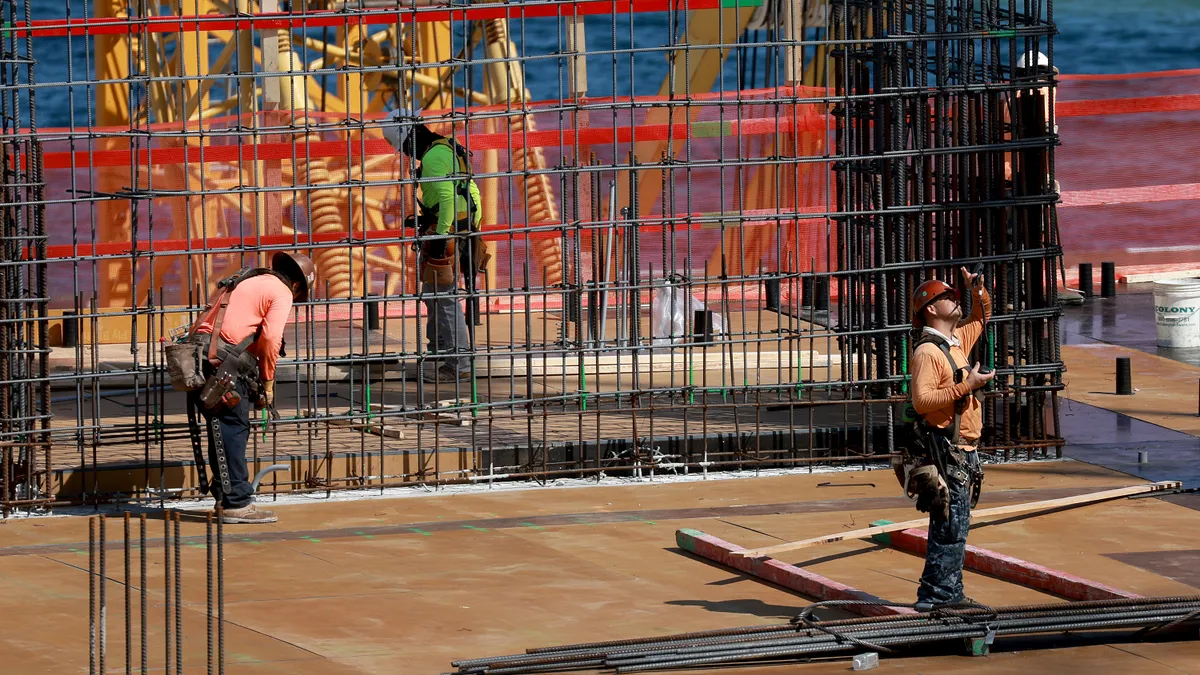The following is an opinion piece by Jay Greenspan, co-founder of Austin, Texas-based cultural consulting firm JMJ and founder of the Injury and Incident Free CEO Forum. Opinions are the author’s own.
Recently, I was asked for my thoughts on the safety challenges the U.S. engineering and construction industry is facing in 2023. To get a broader view, I put the question to the CEOs of 11 different construction companies.
While each CEO had their own company-specific challenges, there were two areas of concern that almost all of them shared. If you are facing similar issues at your organization, you are not alone.
Post-pandemic performance issues
After three years where the pandemic dominated strategy and resources allocation, 2023 is a chance to finally get back to business as usual. However, much of the construction industry is still feeling the effects of the changes it made to keep the workforce safe.
This has prevented many companies from returning to the way they operated pre-pandemic. A large number of the CEOs whose opinions I sought have found themselves addressing performance issues they believed had been resolved years ago.
Worryingly, some 80% of the executives reported that, for the first time in more than 10 years, their safety performance is moving in the wrong direction.

This is even more remarkable when you note that all these companies recorded their best ever safety performance during the most dangerous periods of the pandemic. The CEOs attribute this to the intense focus on health and strictly enforced protocols to prevent spread of the disease. These made people extra vigilant about everything, including following safety processes and procedures vigorously, resulting in significantly reduced incidents and injuries.
So why the change?
When the strict COVID-19 protocols were removed, it seems as if many workers threw the old out with the new, dropping attention and compliance to standard safety protocols.
During the pandemic, the message to supervisors was to keep their distance from workers in order to help slow the spread, A. Ross Myers, CEO of Worcester, Pennsylvania-based transportation contractor Allan Myers, told me. “As a result, supervision and training is way down and incidents are way up,” he said. “What worked in the past is not being done now and this is leaving a big gap.”
What worked in the past to make safety personal, relevant and important was continual interaction between supervision and the workforce.
“Relationship is fundamental to the caring and planning it takes to inspire people to operate incident and injury free,” Myers said. “We need to lead our people away from computer screens and back to hanging out with the men and women on the front line. We need management and supervision to get back into the field and interact and retrain the people on the ground.”
Many of the executives shared similar views. They also noted that because of the hiatus in training, many in their workforce have not received the core and critical programs that enable them to work safely.
If this gap in training isn’t addressed and resolved in 2023, there may be dire consequences. In response, construction companies are rapidly ramping up their training programs to establish a minimum level of competency and commitment from supervision through to the workforce.
Shrinking talent pool
The second challenge, and perhaps the more significant one, has to do with the shrinking labor force — especially craft labor — and the number of incidents involving people with less than two years’ experience.
Executives reported difficulty in finding qualified craft willing to work the hours and locations their projects require, which has necessitated recruiting candidates from outside the industry. This has resulted in new employees who have never been on a construction project before.
These “rookies” lack the situational awareness that is the foundation of most companies’ safety training. Project supervision is stretched to run the projects effectively and bring the workforce up to speed.
An already difficult situation is made worse by a significant decrease in worker retention. Maintaining a stable workforce is increasingly hard when there are many other, more attractive opportunities for those workers than construction which requires working in tough conditions and in a highly disciplined environment.
Make construction a career choice
There is a growing focus on recruiting young people to the construction industry with many firms launching programs this year to attract them. All the executives that I spoke with made it clear they want to share best practices to accelerate effective recruitment with their peers.
To succeed, employers in construction need to encourage mastery of the trade, provide a defined path from apprentice to journeyman and help improve the lives of their employees with benefits and long-term career plans.
Further, it is essential to train supervision on how to effectively lead. This ultimately creates a culture of trust, learning, and a safe workplace which people want to work in. The industry needs consistent investment in training at all levels particularly as construction firms increase nontraditional hires and address the volume of new hires.
Traditionally, when schedule and budgetary pressure increased, training was often the first to go. The executives I interviewed all asserted their commitment to be disciplined in not letting those pressures lead to short-sighted decisions.
They pointed to the benefits of simple things like extensive pretraining, follow-up training and example setting. However, the larger effort for most firms lies around culturalization — how to help the new employee (whether experienced or not) get what it really means to work safely and be committed to doing so.
For most construction firms, committing to a positive culture, especially regarding workers’ safety, has long been a high priority. What’s needed now in this fast-changing workforce is the ability to create and sustain a culture that is self-training and self-reinforcing. In doing so, many of the challenges of 2023 can be addressed.




















